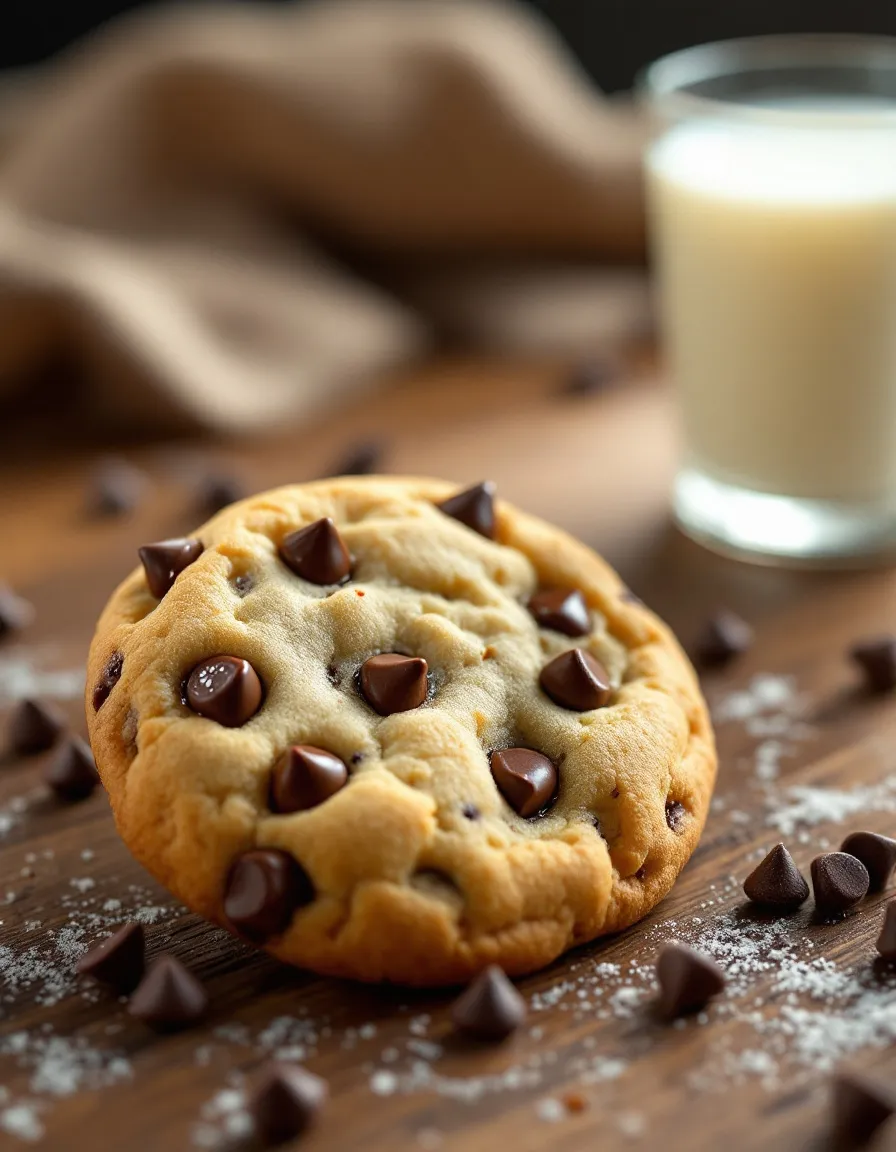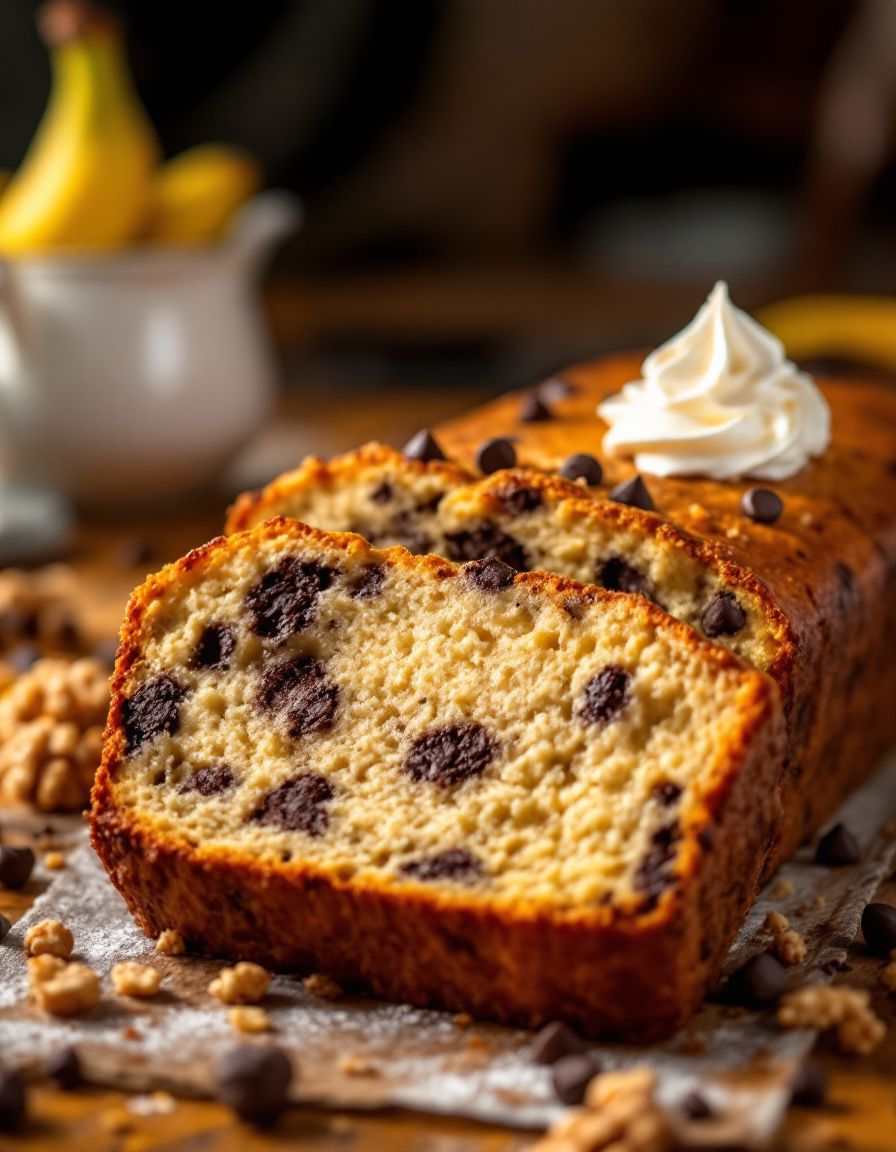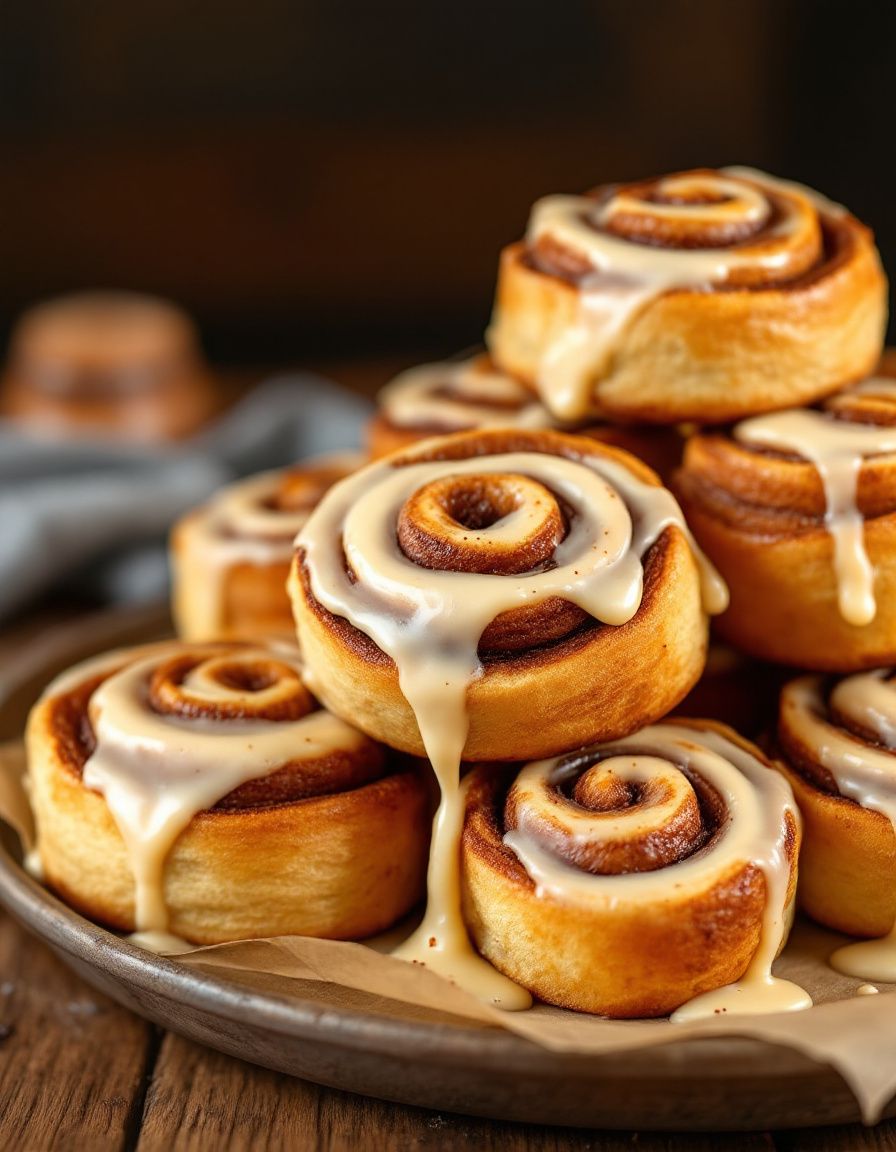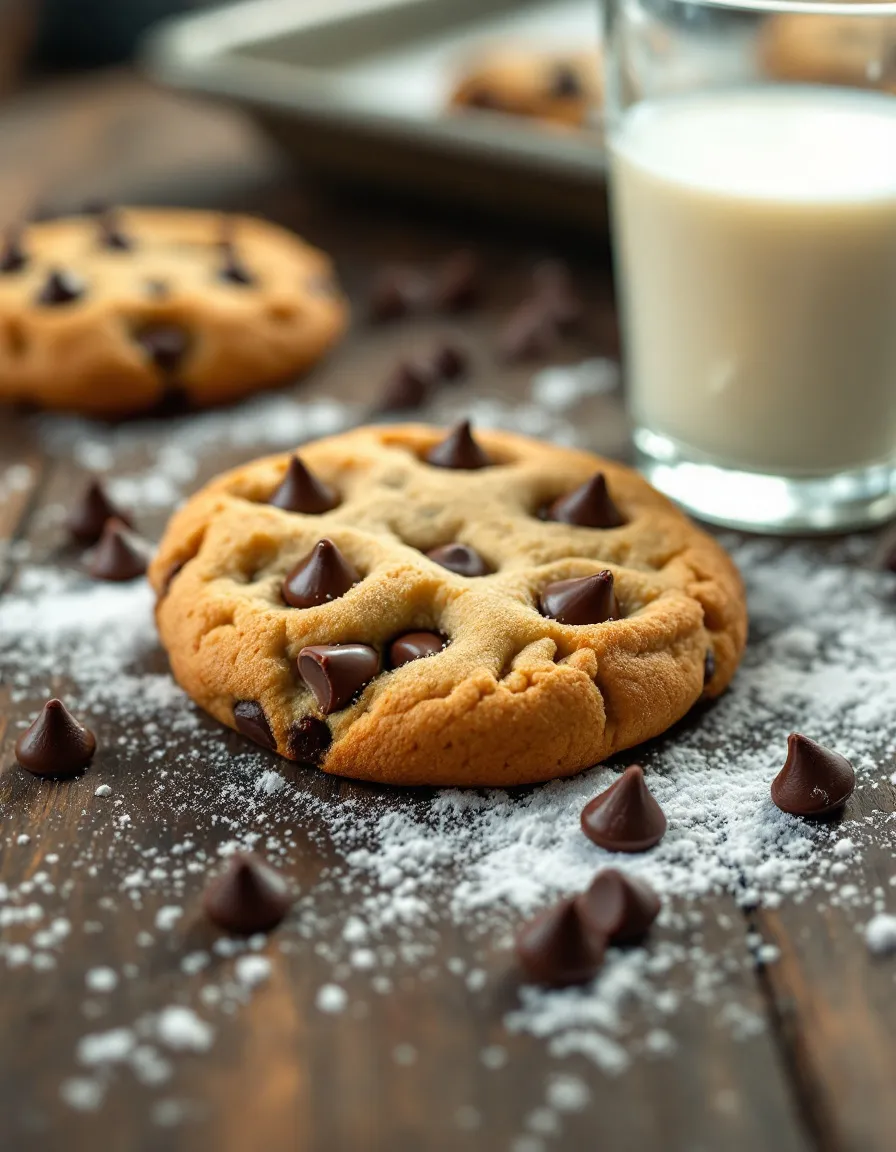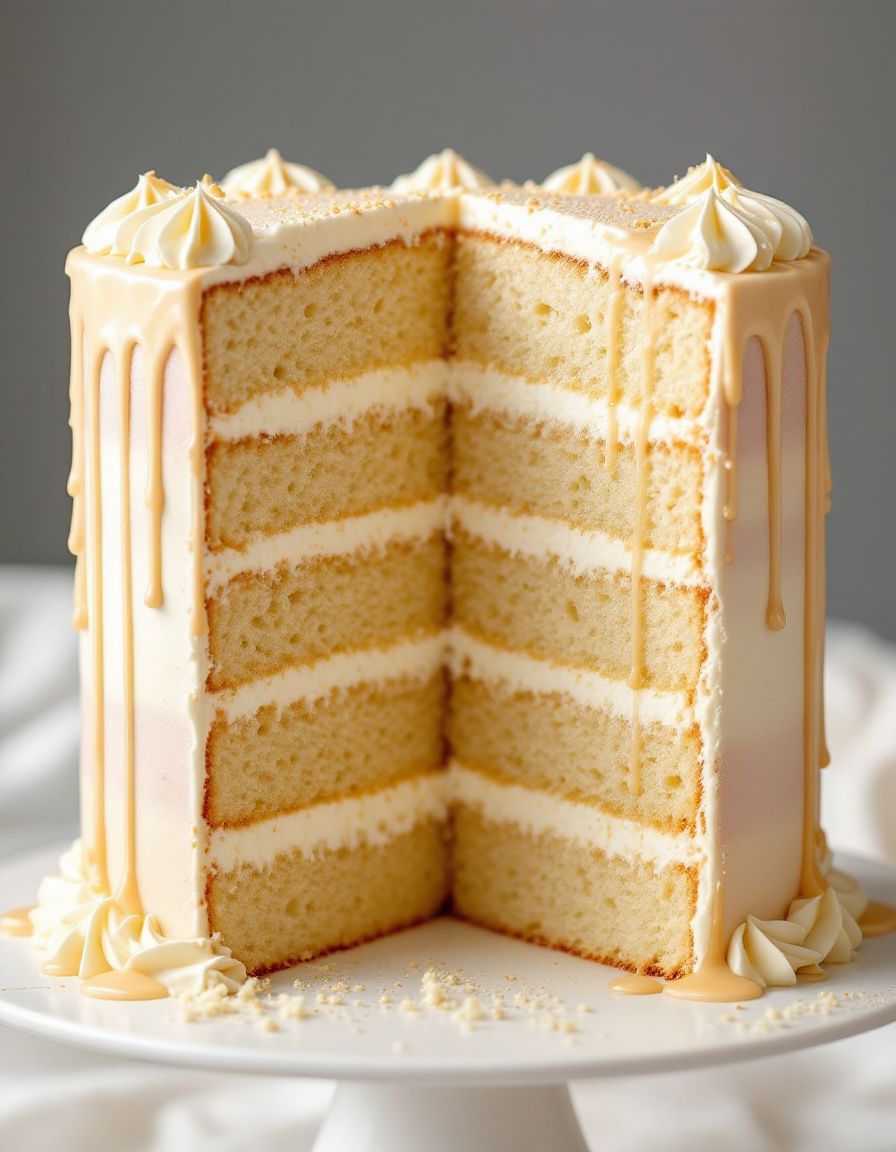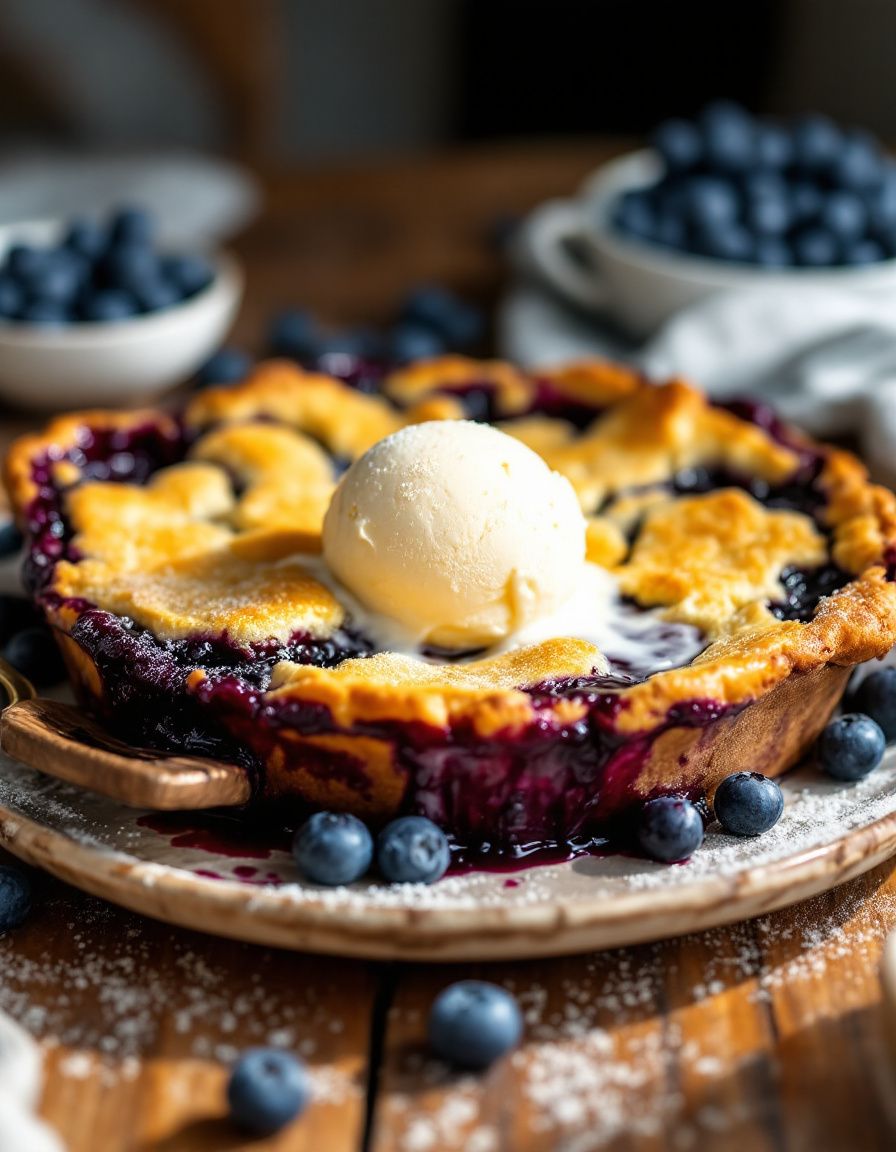Chocolate Chip Cookies: The Ultimate Comfort Treat
Chocolate chip cookies have a timeless appeal that evokes warm memories of childhood and cozy evenings spent at home. The aroma of freshly baked cookies wafting through the air brings about an indescribable sense of comfort, making it a cherished recipe in many households. Whether enjoyed with a glass of milk or shared with loved ones, each bite is a harmony of sweet chocolate, rich butter, and a perfectly baked cookie texture that captivates the senses.
As you embark on making these divine chocolate chip cookies, you’ll discover not only a delightful treat but also a simple process that results in a batch of gooey goodness that holds a special place in the hearts of both young and old. The recipe is straightforward and welcoming, making it a perfect baking project for beginners and seasoned bakers alike.
Quick Recipe Highlights
- Flavor Profile: Sweet, buttery flavors are beautifully complemented by rich, melty chocolate chips that create a balanced sweetness.
- Texture: The cookies are delightfully soft and chewy in the center, with slightly crisp edges that provide the perfect bite.
- Aroma: The warm, inviting aroma of vanilla and chocolate fills the kitchen, creating a cozy atmosphere.
- Visual Appeal: Golden brown, with pools of dark chocolate peeking through, these cookies look as delicious as they taste.
- Skill Level Needed: With simple ingredients and easy-to-follow steps, this recipe is perfect for beginners.
- Special Equipment: A reliable mixing bowl and baking sheet are essential, along with a measuring cup and spoons.
Recipe Overview
- Difficulty Level: This recipe is marked as easy due to its straightforward instructions and minimal technique involved.
- Category: As a classic dessert, chocolate chip cookies belong to the sweet treats category, perfect for snacking or dessert.
- Cuisine: This beloved cookie hails from American cuisine, where it has become a staple in bakeries and homes across the country.
- Cost: The ingredients are affordable, with an estimated cost of $5-$10 for a delicious batch of cookies.
- Season: While delicious year-round, chocolate chip cookies are especially popular during the winter holiday season.
- Occasion: They are perfect for gatherings, celebrations, or simply as an afternoon treat.
Why You’ll Love This Recipe
The experience of indulging in a warm chocolate chip cookie is unparalleled. Each bite evokes a sense of nostalgia, with flavors that are familiar yet comforting. The sweetness of the chocolate mingling with the buttery base creates an irresistible taste sensation that will leave you wanting more. This recipe embodies the essence of homemade baking, delivering cookies that are soft, chewy, and utterly satisfying.
In addition to the delightful taste, the convenience of this recipe is truly worth noting. With just a few staple ingredients and minimal kitchen equipment, you can whip up a fresh batch in under 30 minutes. This makes it perfect for those spontaneous cravings or unexpected guests. Your home will feel inviting as the warm scents fill the air, and you’ve got a quick and easy solution for any dessert emergency.
From a nutritional standpoint, while cookies aren’t often considered health foods, they do contain ingredients such as butter and flour that can be enjoyed in moderation. Making them at home allows for control over ingredients, so you can adjust sweetness and even add nuts or oats for added texture and fiber, enhancing their nutritional profile.
Sharing these cookies can elevate any social occasion, turning a simple get-together into a memorable event. They’re always a hit at parties, and there’s something undeniably joyful about gathering around a plate of cookies with friends and family. The combination of nostalgia and indulgence makes them a delightful treat to share.
Moreover, the ingredients for these cookies are budget-friendly and widely available. Flour, butter, sugar, and chocolate chips are items that many home bakers already have on hand. This makes the recipe accessible for everyone, allowing you to create something delicious without straining your wallet.
Historical Background and Cultural Significance
The origin of chocolate chip cookies can be traced back to the 1930s when Ruth Wakefield created the first batch at the Toll House Inn in Massachusetts. This innovative recipe quickly gained popularity and established itself as an iconic American treat. The introduction of chocolate chips into cookie dough created a delightful new texture and flavor profile that would soon become a staple in households.
Culturally, chocolate chip cookies symbolize comfort and home. They are often associated with the warmth of family gatherings, school bake sales, and the nostalgic feeling of home. The cookie has evolved from a simple recipe into a beloved classic that evokes memories and traditions for many.
Over the years, the chocolate chip cookie recipe has evolved, leading to a variety of regional adaptations and interpretations. Whether baked thick and chewy in New York or thin and crisp in California, variations highlight the versatility and enduring popularity of this cookie.
Further adding to its cultural significance is the invention of National Chocolate Chip Cookie Day, celebrated annually on August 4. This day encourages cookie lovers to indulge in their favorite treat and share their love for this classic recipe, reinforcing its cherished place in American culture.
Ingredient Deep Dive
– **Flour**: This essential ingredient provides the structure for your cookies. All-purpose flour is commonly used due to its versatility. It is vital to measure accurately; spoon flour into the measuring cup, then level it off to avoid dense cookies. Store flour in a cool, dry place and it can last up to a year. If you’re looking for a gluten-free alternative, almond flour or a gluten-free all-purpose blend can be used.
– **Butter**: Providing rich flavor and moisture, butter is crucial for the cookie’s taste and texture. Always use unsalted butter for control over salt levels in your recipe. When selecting butter, look for freshness by checking the expiration date. Store it in the refrigerator and it can last several months. For a dairy-free option, use coconut oil or a dairy-free butter substitute.
– **Sugar**: Granulated sugar adds sweetness and helps create a lovely texture. You can experiment with brown sugar for a chewier cookie or use coconut sugar for a healthier alternative. Each type of sugar offers varying flavors and moisture levels. For storage, keep sugar in an airtight container in a cool, dry place, and it can last indefinitely.
– **Chocolate Chips**: The star ingredient of the recipe, chocolate chips come in various flavors (semisweet, milk chocolate, dark chocolate). Opt for high-quality chocolate chips for the best flavor. They should be stored in a cool, dry place and sealed tightly to maintain freshness, typically lasting up to a year if unopened. For a fun twist, try using white chocolate or even peanut butter chips for variation.
Common Mistakes to Avoid
- Using cold ingredients: Always ensure your butter is at room temperature for a better batter consistency.
- Overmixing the dough: Mixing too much can lead to tough cookies – mix just until ingredients are combined.
- Not preheating the oven: Always preheat your oven to ensure even baking; cookies can spread if the oven isn’t hot enough.
- Skipping the chilling step: Chilling the dough enhances flavor and prevents excessive spreading while baking.
- Not measuring accurately: Use proper measuring techniques for flour and sugar to avoid cookie disasters.
- Using expired ingredients: Check the dates on your baking powder and baking soda for the best results.
- Overbaking the cookies: Remove cookies just as the edges start to turn golden; they’ll continue to firm up as they cool.
- Neglecting to line the baking sheet: Think of it as a little insurance policy to prevent sticking and make for easier cleanup.
- Ignoring the cooling time: Let cookies cool on the baking sheet for a few minutes before transferring to a wire rack to maintain the structure.
Essential Techniques
– **Creaming Butter and Sugar**: This technique is essential for incorporating air into your batter, which creates a lighter texture. To master this, beat the butter and sugar together until light and fluffy, which usually takes about 2-3 minutes. A common pitfall is to rush this step; ensure you scrape down the sides of the bowl to incorporate all the ingredients fully.
– **Measuring Ingredients**: Proper measurements ensure consistency in your baking. Use dry measuring cups for flour and sugar and liquid measuring cups for liquids. Spoon flour into your measuring cup without packing it down, and level it off with a knife for accuracy. A common mistake is to scoop flour directly, which can lead to dense cookies.
– **Baking Temperature**: Understanding your oven is crucial for perfect cookies. An oven thermometer can help ensure the correct temperature; many home ovens can give inaccurate readings. Bake cookies until the edges are slightly golden even if the centers seem underdone; they will firm up as they cool.
Pro Tips for Perfect Chocolate Chip Cookies
– Invest in quality chocolate chips for a more flavorful cookie.
– Allow your dough to chill in the fridge for at least 30 minutes to enhance the flavor and reduce spreading.
– Experiment with different flavors of chocolate chips, like dark or butterscotch, to create unique cookies.
– Rotate your baking sheets halfway through baking for even cooking.
– Consider adding a pinch of sea salt on top of the cookies before baking for a delightful contrast in flavor.
– Try using parchment paper on your baking sheets for easy removal and cleanup.
– Experiment with additions like nuts or dried fruit for added texture and flavor.
– Don’t press down on the cookie dough balls before baking; let them rise naturally for a fluffier cookie.
Variations and Adaptations
– **Regional Variations**: In the United States, you’ll find variations such as the New York-style cookie, which is thicker, or the California-style, known for being thinner and crispier.
– **Seasonal Adaptations**: Add warmed spices like cinnamon or nutmeg for a fall twist, or incorporate seasonal ingredients like pumpkin for an autumn flair.
– **Dietary Modifications**: For those who follow a vegan diet, substitute butter with coconut oil and use chia seeds or flaxseed meal as egg replacements.
– **Flavor Variations**: Try integrating peanut butter into your dough for a rich and nutty taste, or add espresso powder for a coffee-flavored cookie.
– **Texture Modifications**: For chewier cookies, slightly underbake them for a gooey center, or leave them longer for a crisper cookie.
– **Presentation Alternatives**: Drizzle melted chocolate on top of baked cookies for a decorative touch or sprinkle with sea salt after baking for stunning visual appeal.
Serving and Presentation Guide
When it comes to serving chocolate chip cookies, presentation can elevate the experience. For a rustic look, stack warm cookies on a wooden board, or arrange them on a colorful plate. For an elegant touch, consider dusting them lightly with powdered sugar or serving them alongside a scoop of vanilla ice cream.
Garnishing with fresh mint leaves or drizzling with caramel can add a pop of color and flavor. Look for complementary accompaniments like a rich chocolate sauce served in a ramekin on the side, or fresh berries placed artfully around the cookies for a vibrant contrast.
Serve warm cookies with a glass of milk at room temperature, or consider placing them in a decorative tin or box for gifting. Remember, portion control is crucial; consider wrapping individual cookies in parchment paper for an attractive and personal touch.
Wine and Beverage Pairing
Chocolate chip cookies can be paired with a variety of beverages to enhance the experience. For adults, a glass of rich red wine, like Cabernet Sauvignon, complements the sweetness of the cookies beautifully. If you’re opting for something lighter, consider a sparkling wine to cut through the richness.
For non-alcoholic options, serve cookies with a creamy glass of milk, or enjoy with a rich hot chocolate for an indulgent treat. Iced coffee or a warm cup of chai tea also make delightful additions, balancing the sweetness while adding warm spices to each bite.
Temperature is key; pair warm cookies with chilled beverages to create a delightful contrast, enhancing both the flavor and texture with every sip and bite.
Storage and Shelf Life
To keep your chocolate chip cookies fresh, store them in an airtight container at room temperature for up to a week. For longer storage, consider freezing them. Ensure they are cooled completely before placing them in a freezer-safe bag, where they can last up to three months.
If you notice any signs of spoilage, such as an unusual odor or changes in texture, it’s best to discard them to ensure safety. When reheating, place frozen cookies in the oven at 350°F for about 5-10 minutes until warmed through, returning them to their delightful state.
For immediate enjoyment, let cookies sit at room temperature post-baking. This allows them to maintain the ideal texture and softness that makes them so irresistibly delicious.
Make Ahead Strategies
Planning ahead can save time and effort when baking chocolate chip cookies. You can prepare the dough in advance and refrigerate it for up to 3 days. This enhances the flavors as the ingredients mingle. Alternatively, freeze rolled dough balls for quick baking whenever your craving strikes.
When ready to bake, simply preheat the oven and place the frozen dough directly on a lined baking sheet (you may need to add a few extra minutes to the baking time).
Another strategy is to prepare cookie dough and then portion it into cookie shapes. Freeze the shapes on a baking sheet, then transfer them to a bag. When guests arrive or a craving strikes, simply bake the desired amount and enjoy freshly baked cookies in no time.
Scaling Instructions
Scaling the chocolate chip cookie recipe can easily accommodate different batch sizes. To halve the recipe, simply cut all ingredients in half while ensuring that you maintain the same ratios to preserve texture and taste.
When doubling or tripling the recipe, consider increasing baking time slightly, watching the cookies closely to avoid overbaking. Adjust your mixing equipment as necessary; a larger bowl or mixer may be needed to handle a bigger volume of dough.
Always remember that different ovens can vary in heating power, so use visual cues and toothpick tests to ensure they’re baked perfectly, regardless of the batch size. Store any extra cookies as per normal guidelines to keep them fresh.
Nutritional Deep Dive
Analyzing the nutritional content of chocolate chip cookies can guide healthier baking choices. Each cookie generally contains a balance of macronutrients: carbohydrates primarily from the flour and sugars, fats from butter, and some protein.
With an average of around 100 calories per cookie, considering ingredient swaps can enhance their nutritional profile. Using whole wheat flour boosts fiber content, while incorporating nuts adds protein and healthy fats that contribute to satiety.
Micronutrients, such as calcium and vitamin D from added dairy, can also play a role in nutrition. For those watching their intake, being conscious of portion sizes helps maintain balance even while enjoying these delightful treats.
Dietary Adaptations
For gluten-free adjustments, substitute regular flour with a gluten-free blend to maintain the cookie’s texture. Ensure that all other ingredients are also certified gluten-free to avoid cross-contamination.
For a dairy-free option, coconut oil or a vegan butter blend can replace regular butter, and almond milk correlates well with the flavors present in the cookie.
Vegetarian and vegan diets benefit from flax seeds or chia seeds as egg replacements, helping bind the cookies without compromising on texture. For those following a ketogenic or low-carb diet, almond flour can be used instead of traditional flour, ensuring that beloved cookies can be enjoyed without the carb overload.
Troubleshooting Guide
If your cookies turn out flat, it may be due to too much butter or not enough flour. Ensure you’re measuring ingredients accurately. Cookies that are too dry usually result from overbaking or too much flour; check your measurements and baking time.
If flavors seem off, consider adjusting the amount of salt or quality of chocolate used, as high-quality chocolate significantly impacts flavor. Cookies need adjustments in baking time or temperature when they’re coming out unevenly baked.
If the dough doesn’t hold together, this could be from not enough fat. You can mix in a touch more butter to help with cohesion, or if the dough is sticking too much, refrigerate it for 30 minutes to promote better handling.
Recipe Success Stories
Our community has shared wonderful feedback and variations of this beloved chocolate chip cookie recipe. One reader noted how substituting some of the chocolate with peanut butter chips elevated the taste to new heights. Others loved adding a pinch of cinnamon for a hint of spice that surprised the palate.
Photographs of elegantly arranged cookies illustrate the creativity that goes into serving this classic dessert. Many bakers found the straightforward guide easy to follow, allowing even novice bakers to create impressive cookie batches.
The unique stories shared by our readers reflect the love and nostalgia tied to this recipe. Hearing about how these cookies became family favorites or the centerpiece at gatherings brings immense joy to the recipe’s legacy.
Frequently Asked Questions
Yes, you can substitute up to half of the all-purpose flour with whole wheat flour, which adds nutritional benefits and a nuttier flavor to your cookies. However, using too much may lead to a drier cookie.
2. How can I make my cookies chewier?
For chewier cookies, try decreasing the baking time slightly and keeping the dough chilled before baking. Additionally, using more brown sugar than white can also contribute to a chewier texture.
3. What’s the best way to store cookies?
Store cookies in an airtight container at room temperature for up to a week. For longer storage, freeze them in a freezer-safe bag, where they can last for up to three months.
4. Can I make the dough in advance?
Absolutely! You can prepare the dough a few days in advance, refrigerate it for enhanced flavors, or freeze it in pre-formed balls to bake fresh cookies whenever you desire.
5. How do I know when my cookies are done baking?
Look for golden edges and a slightly underdone center. The cookies will firm up as they cool, resulting in the perfect balance of chewy and crispy.
6. Can I add nuts to my cookie dough?
Definitely! Chopped pecans or walnuts make a great addition to chocolate chip cookies, enhancing both flavor and texture.
7. Is it necessary to chill the dough?
Chilling the dough isn’t mandatory but is highly recommended to develop flavors, reduce spread, and achieve a thicker cookie.
8. Can I use chocolate chunks instead of chips?
Yes! Chocolate chunks will provide a more rustic appearance and offer varying textures during baking.
9. How can I make these cookies healthier?
Reduce sugar, substitute whole wheat flour, or add oats and nuts. Additionally, using dark chocolate can also enhance the health benefits.
10. What can I do if my cookies spread too much?
Ensure your butter is soft, but not melted, and that you are measuring flour accurately. Additionally, chill the formed dough balls before baking to help prevent spreading.
Additional Resources
To further enhance your baking journey, check out other related recipes such as oatmeal cookies and peanut butter cookies. Explore technique guides that dedicate time to different mixing techniques or decorative icing.
For those interested in diving deeper into ingredients, many sites offer extensive information on the health benefits of chocolate or alternative flour choices. If you’re looking for the best baking equipment, consider recommendations for high-quality mixing bowls and baking pans that can make your baking experience smoother.
Seasonal variations provide ideas for festive baking, allowing you to create themed cookies for every holiday, from pumpkin spice cookies in the fall to peppermint chocolate cookies in winter.
Join the Conversation
We’d love for you to share your experiences and adaptations of this chocolate chip cookie recipe! Connect with us on social media, where you can post your cookie creations and share tips with fellow bakers.
Drop a comment about your favorite variations and any feedback you have, as community engagement can provide valuable insights and ideas for everyone. Don’t forget to snap a picture of your delicious cookies and tag us, as we will feature some of your amazing recipes in our next post!
The Recipe
Chocolate Chip Cookies
Serves: 24 cookies
Prep Time: 15 mins
Cook Time: 10 mins
Total Time: 25 mins
Kitchen Equipment Needed
- Mixing bowl
- Measuring cups and spoons
- Baking sheet
- Parchment paper (optional)
- Cooling rack
Ingredients
- 2 1/4 cups all-purpose flour
- 1/2 teaspoon baking soda
- 1 cup unsalted butter, room temperature
- 1/2 cup granulated sugar
- 1 cup packed brown sugar
- 1 teaspoon salt
- 2 teaspoons pure vanilla extract
- 2 large eggs
- 2 cups chocolate chips
Directions
- Preheat the oven to 350°F (175°C) and line baking sheets with parchment paper.
- In a small bowl, whisk together flour and baking soda; set aside.
- In a large mixing bowl, cream together the butter, granulated sugar, brown sugar, and salt until smooth.
- Add vanilla and eggs; beat until fluffy.
- Gradually add the flour mixture, mixing just until blended.
- Stir in chocolate chips.
- Drop dough by rounded tablespoons onto prepared baking sheets, spacing them apart.
- Bake for 10-12 minutes or until edges are golden brown.
- Allow cookies to cool on the baking sheet for a few minutes before transferring to a wire rack.
Recipe Notes
- Chilling the dough enhances flavor and prevents spreading.
- For softer cookies, remove them from the oven while they look slightly underdone.
- Keep extra cookies in an airtight container for best freshness.
